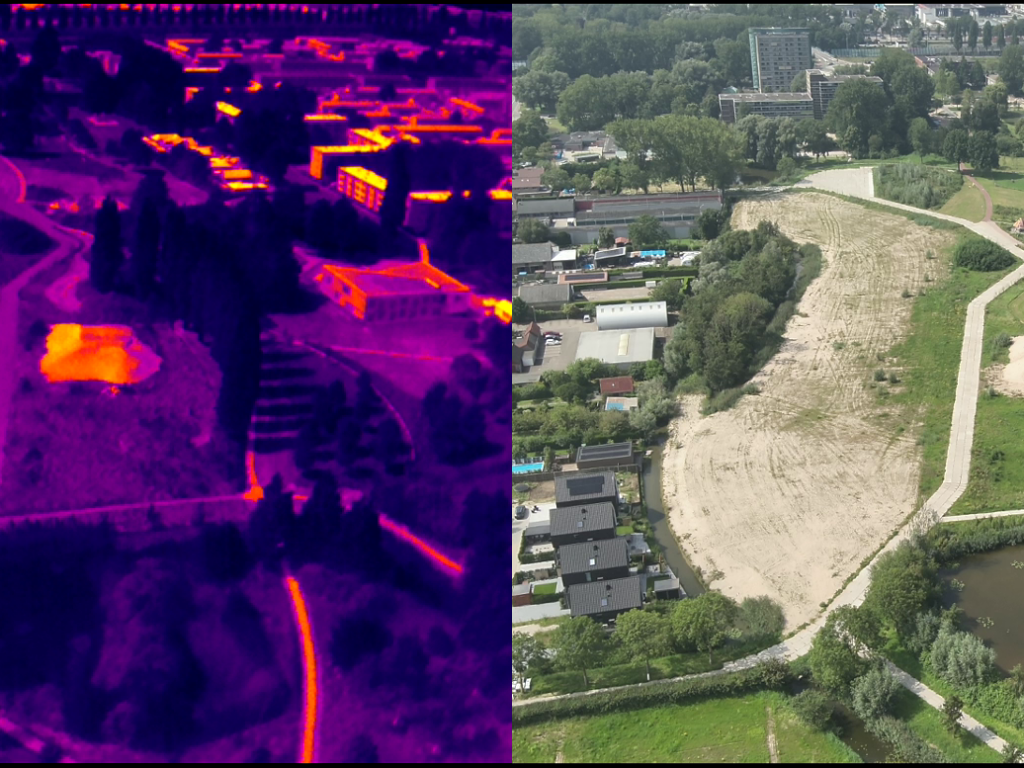Assessing the Impacts: Lessons from LIFE CRITICAL’s Monitoring Approach
Monitoring plays a critical role in the success of climate adaptation projects. It is through detailed and continuous data collection that we can measure the real-world impact of adaptation measures on the environment, refine our approaches, and build trust among stakeholders.
The LIFE CRITICAL project places a strong emphasis on effective monitoring as an integral part of its methodology for enhancing urban climate resilience.
The project’s work in Dordrecht has demonstrated how targeted data collection and monitoring efforts can provide invaluable insights into the effectiveness of climate resilience strategies. By employing innovative approaches and involving the community, LIFE CRITICAL is not only driving environmental improvements but also fostering collaboration and trust among residents, municipalities, and technical experts.

We’ve compiled these lessons into two resources – a case study on the work in Dordrecht and a guidebook to replication. Our guidance offers the following best practices for monitoring climate adaptation measures:
Ensure data relevance and targeted monitoring
First identify which climate adaptation measures must be monitored and determine if existing sensor networks are sufficient or if expansion is needed. The selection of sensors should be based on their relevance to climate resilience measures, the sensor unit requirements (e.g. power and connectivity), and the accuracy and long-term reliability they offer. To quantify the impacts of climate resilience measures, it is necessary to compare sensor data before and after urban transformation. Deploy any necessary additional sensors and document baseline measurements before any transformation.Perform continuous sensor evaluation for data accuracy
Continuously evaluate sensor performance, especially for sensors that are more likely to drift over time. This practice ensures the accuracy of data collected. Consider deploying sensor prototypes alongside traditional monitoring stations to assess sensor performance under relevant climate conditions.Leverage low-cost citizen science sensors
Monitoring is not just about gathering data; the impact here is also about creating awareness and driving changes in attitude at both the governmental and citizen levels. Embrace the use of LCS to empower citizen science and strengthen climate adaptation efforts, enabling citizens to transform their concerns into actionable questions and actively engage in the discovery process. The integration of citizen science sensors not only motivates community members to improve their own spaces and neighbourhoods, but also fosters trust among all stakeholders while building interest in science.Open data sharing for citizen engagement
Share sensor data on a public platform, accessible to all citizens. Open data sharing establishes transparency and encourages citizen engagement. This practice enhances collaboration between local municipalities and residents, fostering a mutually beneficial relationship. Citizens, when given access to sensor data, become more involved with the areas in which these sensors are deployed. This increased interaction allows citizens to provide valuable feedback to technicians, aiding in the interpretation of observed data and ensuring a more informed decision-making process.Effective communication and collaboration
Good communication between the municipality and collaborators with technical and scientific expertise is vital. It forms the foundation for defining research questions related to the quantification of climate resilience and technologies to measure. This open collaboration allows for a more thorough analysis of the data collected and ensures that the monitoring efforts align with the overarching goals of climate adaptation projects.
Curious to read more? For in-depth analysis, check out our case study on Dordrecht, and for practical steps, explore our guidebook!
